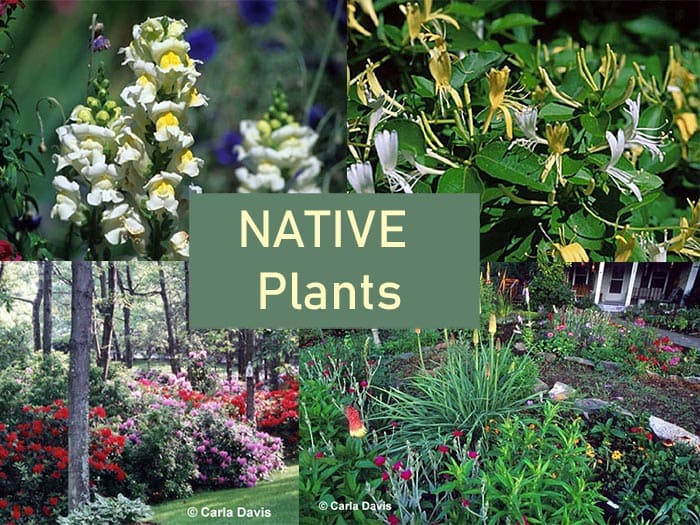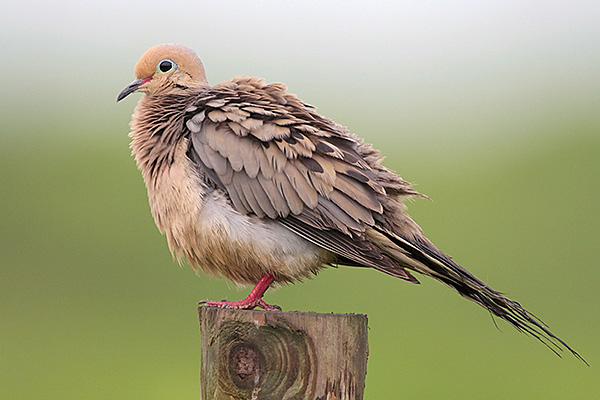
Michigan Plants for Wildlife Habitat & Conservation Landscaping
Do you enjoy observing nature…hearing the song of the chickadee…watching hummingbirds fill up on nectar from trumpet vines…listening to the chattering of squirrels…seeing the beauty and grace of a monarch butterfly perched on a milkweed… experiencing the antics of a Mockingbird…the cooing of the Mourning Doves…the swiftness of the Cottontail…and the brilliance of a Cardinal or Baltimore Oriole?
If the answer is “yes”, you’ll probably want to landscape your property for wildlife so you can experience even more from Mother Nature by attracting more wildlife to your property.
Wildlife doesn’t just randomly appear in a given area. It is there because of favorable habitat. The essential elements that you must provide in your habitat are food, water, cover and a place to raise a family. To attract the most wildlife, you need native trees, shrubs, groundcover, vines and wildflowers, many of which will provide food and shelter.
Native or indigenous plants naturally occur in the region in which they evolved. They are adapted to local soil, rainfall and temperature conditions, and have developed natural defenses to many insects and diseases. Because of these traits, native plants will grow with minimal use of water, fertilizers and pesticides. Wildlife species evolve with plants; therefore, they use native plant communities as their habitat. Using native plants helps preserve the balance and beauty of natural ecosystems.
Remember the function served by plants and structures is more important than their appearance. In other words, don’t base your planting decisions solely on what a plant looks like. Following are WindStar Wildlife Institute’s plant recommendations for wildlife habitats in Michigan:
Trees
Tall–Eastern Hemlock, , Eastern White Pine, Balsam Fir, Common Juniper, Norway Spruce, Northern Pin Oak, Bur Oak, Shagbark Hickory, Butternut, Black Walnut, White Oak
Medium/Small–Serviceberry, Eastern Redbud, Wild Plum, Pie Cherry, Amur Chokecherry, Common Chokecherry, Eastern Red Cedar

Mourning Doves are very common in Michigan.
Shrubs
Summer food–Highbush Blackberry, Northern Dewberry, Black Raspberry, Red Raspberry, American Elderberry, Lowbush Blueberry, Highbush Blueberry, Lingenberry
Fall food–Red-osier Dogwood, Winterberry, American Mountain Ash, Gray Dogwood, Silverberry, Inkberry, Common Juniper, Canada Yew, Bearberry
Winter food–Bittersweet, American Highbush Cranberry, Glossy Black Chokeberry, Viburnums, Northern Bayberry, Sumacs, Red Chokeberry, Common Snowberry, Wolfberry, Coralberry, Wayfaringbush, Nannyberry, Spicebush
Butterfly, Bee & Moth
New Jersey Tea, Buttonbush, Sweet Pepperbush, Spicebush, Pussy Willow, Narrowleaf Meadowsweet, Wolfberry, Coralberry, Preston Lilac, Old-fashioned Weigela, Dill, Asters, Sweet William, Sweet Pea, Sweet Marjoram, Black-eyed Susan, Scarlet Sage, Hollyhock, Indian Hemp, Intermediate Dogbane, American Columbine, Swamp Milkweed, Prairie Milkweed, Common Milkweed, Butterflyweed, New England Aster, Turtlehead, Tickseed Sunflower, Joe-Pye Weed, Purple Coneflower, Fireweed, Oxeye Sunflower, Lupine, Prairie Blazingstar, Gayfeather, Gay Goldenrod, Cardinal Flower
Groundcovers
Straw Lily, Violet Wood Sorrel, Partridgeberry, Wintergreen, Blue Wood Sedge, Wild Ginger, Golden Ragwort
Vines
Scarlet Trumpet Creeper, Northern Catalpa, Scarlet Trumpet Honeysuckle, Old-fashioned Weigela
Grasses and Legumes
Indiangrass, Little Bluestem, Sideouts Grama, Prairie Milkvetch, Switchgrass, White Prairie Clover, Purple Prairie Clover, Prairie Cordgrass, Northern Dropseed, Junegrass
Michigan, touching on four of the five Great Lakes, the two land areas of Michigan give the state a shoreline of 3,288 miles, second in length only to Alaska. Michigan also supports over 11,000 lakes. Michigan’s two separate land areas are called the Upper Peninsula andthe Lower Peninisula. They’re connected by the the five mile long Mackinac Bridge.
Two land regions characterize the Michigan landscape; the Superior Upland and the Great Lakes Plains. The lower peninsula is fairly level but some low rolling hills can be found in the south. To the north this changes to a northern tableland of hilly belts. The upper peninsula is level with swampy areas in the east; part of the Great Lakes Plains. To the west, the land achieves higher elevations and the terrain becomes more rugged. The Superior Upland runs along Lake Superior and into the Porcupine Mountains in northwestern Michigan. The Michigan Botanical Club can provide lists of plants for a specific region.
For more information on improving your wildlife habitat, visit the WindStar Wildlife Institute web site. On the web site, you can also apply to certify your property as a wildlife habitat, register for the “Certified Wildlife Habitat Naturalist e-Learning course, become a member and sign up for the FREE WindStar Wildlife Garden Weekly e-mail newsletter.


Chana Finman
Thursday 29th of June 2023
Hi. I have a question for you from Ferndale Michigan. I want to know what are recommendations for assisting birds in my region, south east Michigan suburbs. We have a big property and have many trees, shrubs, gardens and hope to plant more to assist birds here.
We also have many bird feeders. I assume it's better to plant sustainable berry, seed and such rather than to keep filling feeders with commercial bird food. Is that true?
What are the best shrubs, flowers and trees that you recommend?
I'd appreciate any help you can offer.
Thanks Chana Finman
Patrick O'Donnell
Monday 10th of July 2023
@Chana- Thank you for making a bird friendly property! It must be a magnet for birds. In general, yes, planting various native plants will attract and help out the greatest variety of birds but keeping feeders up helps too.
Here are a few suggestions for further plantings fantastic for birds: Trees- Black Cherry, Red Mulberry Mountain Ash, and American Crabapple Bushes- Chokecherry, Elderberry, Sumac Flowers- Wild Bergamot, Sunflower, Butterfly Weed
For more tips to garden for birds, check out our article- https://www.birdzilla.com/gardening-for-birds/
And, for an excellent list of plants to use and ones to avoid, see this page at the Michigan Audubon site Check https://www.michiganaudubon.org/wp-content/uploads/2016/04/MI-Native-Plants-for-Bird-Friendly-Landscapes_Website.pdf
Sally Stebbins
Thursday 22nd of June 2023
Useful lists. I like that the shrubs are divided by when they fruit. Please note that some of the plants listed under Butterfly, Bee and Moth are not native. (Hollyhock?) Also, northern catalpa is not a vine, it's a large tree. Correct spelling is sideoats grama (not sideouts).
Patrick O'Donnell
Thursday 22nd of June 2023
@Sally- Thank you for that information! Plants can be tough for us bird people, always more to learn.